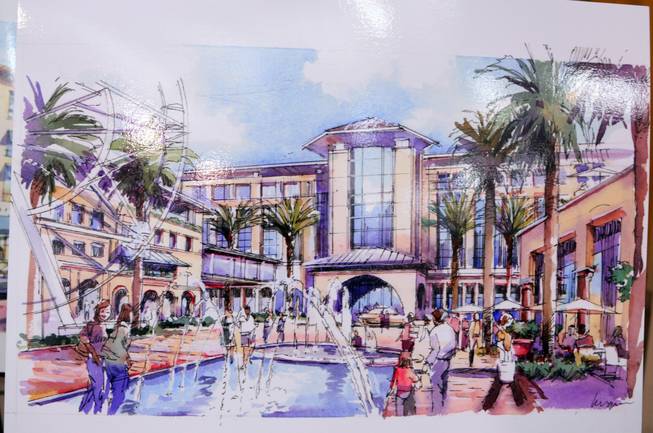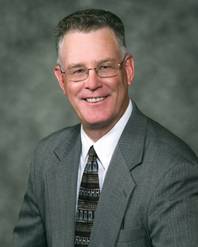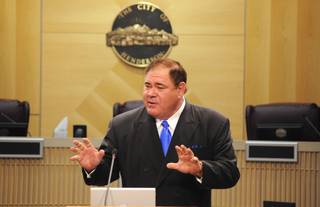
Union Village will be one of the first integrated health-care and mixed-use developments in the country. Developers unveiled its master plan Thursday, April 7, 2011, at Henderson City Hall.
Saturday, May 7, 2011 | 2 a.m.
Union Village
Sun archives
When developers announced ambitious plans last month to build a $1.5 billion health care project known alluringly as Union Village in Henderson, the plan was greeted with cautious optimism. The big question: Will the private project, which is on the hunt for additional capital, become yet another empty promise of grandeur stalled by the recession?
After years of binging on subprime mortgages and easy money, residents and developers have waken to a splitting headache of bankruptcies, foreclosures, high unemployment and scores of half-baked projects blotching the desert landscape. In the recession’s wake, Las Vegas Valley residents and observers have become more wary of big promises made by developers.
“I would be quite skeptical. (Union Village) is very expensive, and not without a lot of risk,” said Sheryl Skolnick, principal and senior health care services analyst at Connecticut-based CRT Capital Group, which provides financial research to Wall Street firms. “This project will take some convincing.”
A capacity crowd gathered at the Henderson City Council Chambers on April 7 was greeted with artist renderings depicting what developers heralded as the nation’s first “integrated health village” — a mixed-used development anchored by a hospital and senior retirement community.
Union Village, planned for a city-owned plot at U.S. 95 and Galleria Drive, is the first major project in Henderson since the $1 billion M Resort opened in March 2009 at Las Vegas Boulevard and St. Rose Parkway.
Just four months after opening, the casino could not afford to make interest payments on its $700 million loan. By October, the resort was worth less than the debt owed on it, and was taken over by new owners.
The neighboring $1.5 billion Inspirada master-planned community faces Chapter 11 bankruptcy after just 700 of 11,500 homes planned were built since the project was approved in 2005. Inspirada is south of the Henderson Executive Airport.
The nearby City Crossing — a $2 billion mixed-use development with luxury housing, offices and retail — filed for Chapter 11 bankruptcy protection in June 2008. At the time, developers had only completed site work on the 126-acre project.

Inspirada, near Anthem in Henderson, was envisioned as a 13,500-home, 2,000-acre New Urbanist community where people could walk to parks, schools and a casino, but the housing slump has called into question the commitment of developers and buyers and perhaps lowered the value of some of the homes by about $100,000.
Despite the odds, Union Village’s managing partner David Baker is optimistic his project will not go the way of other projects in Henderson.
“I’m fully aware that when we first came to town, if we talked about doing some retail development, guys would fall of their chairs laughing, because why develop something new when you can get something down the street for 30 cents on the dollar?” Baker said. “We’re confident. If we weren’t, we wouldn’t be putting our money into this.”
Contrary to the grand master plan unveiled last month, Union Village started out as a humble idea. St. Rose Dominican Hospitals was looking to build a 214-bed hospital to replace the 64-year-old Rose de Lima Campus at Lake Mead Parkway and Boulder Highway. Hospital administrators will re-evaluate uses for the old campus once construction on the new campus is completed, officials said.
“While the Rose de Lima Campus has done well and had a distinguished career in Henderson for over 60 years, it’s obvious to all of us that … much of it is ancient,” stated Rod Davis, president and CEO of St. Rose Dominican Hospitals. “When these developers came forward and shared with us their vision, how we can be a part of that, a light went on and this helped us solve a very serious dilemma.”
But instead of just building a hospital, Union Village developers had larger aspirations for the project: They wanted to build a senior retirement community that could tap into the St. Rose health care system.
“There are not very many places where you could be in one place and have all the facilities you really need to progress from acute care to rehab, from long-term acute care to skilled nursing, from independent living to assisted living to Alzheimer’s,” Baker said. “That continuum of care was pretty important.”
For a city with a burgeoning senior population like Henderson, which counts more than half of its population at age 45 and older, the retirement village and hospital are a way to meet a growing demand for senior housing and health care.
“It’s a niche that is being talked about countrywide, how health care really needs to be addressed,” Mayor Andy Hafen said when the plan was presented. “Henderson is a wonderful place for it to start because … the age of our city residents is creeping up.”

Henderson Mayor Andy Hafen
Baker, a former mayor of Irvine, Calif., who helped develop Irvine Medical Center, said he had watched from afar the success of St. Rose’s Siena Campus, built in 2000 at Eastern Avenue and St. Rose Parkway. Over the past decade, retail and commercial developments have flourished around the hospital, Baker said.
He said he wants to replicate that success in Union Village by adding amenities such as an athletic club, hotel, movie theater, restaurants and specialty stores. It will also house the Henderson Space and Science Center, which will be built separately.
In late April, the Henderson City Council approved a resolution that expressed the city’s intent to sell the land to Union Village developers for $11.6 million. City officials said they expect to close the deal by mid-June.
Although the land comes at a steep discount from its appraised $30.1 million, a large gravel pit on the property will have to be filled before grading can begin, estimated to cost developers at least $17.5 million, according to city officials.
And that’s the cost before construction on the hospital, senior village and shopping center can even begin. Union Village plans to seek funding from pension funds, investment banks, individual investors and grants.
Still, is there really $1.5 billion floating around in financial markets for such a large-scale project in this economic climate?
Some observers think so, and recent economic trends show room for optimism.
The construction industry was slammed by the recession, especially in Las Vegas. However, health care construction has weathered the recession better than residential and commercial construction, and it is slowly coming back, demonstrating slight month-over-month increases this year, according to the Commerce Department.
Further, according to Union Village partner Hammes Co. — the nation’s largest health care construction firm for 12 consecutive years — health care real estate construction was up 49 percent last year. “The financial markets, despite what we may hear from time to time, are in good shape,” said Stephen Brown, director of UNLV’s Center for Business and Economic Research. “Building costs and interest rates are low, and there are a lot of construction workers who need jobs. This is a big project, but it’s exactly the right time to do it.”
Credit lines frozen in the immediate aftermath of the recession have also begun to thaw, Skolnick said.
“The credit market is really quite liquid now,” she said. “There is quite a bit of money available for publicly traded companies right now.”
However, attracting Wall Street investors into the depressed Las Vegas market for Union Village will still be difficult, said Skolnick, who has more than 20 years of experience on the East Coast working with the health care industry.
“The economy in Las Vegas has stabilized at a very low level of utilization for existing health care,” Skolnick said. Union Village “will need to be carefully studied.”
Baker acknowledges that one of the project’s main challenges is reducing the risk for investors “as much as possible.” However, the benefits and returns of Union Village far outweigh its risks, he said.
Last year, Union Village LLC conducted several feasibility studies that revealed a rosy return on investment.
The studies found that it would create 17,000 direct and indirect jobs (including 5,000 permanent jobs), attract up to 30,000 visitors daily and generate about $10 billion in tax revenue during the first 25 years.
It’s a high-stakes gamble with potential for huge returns, and Baker said he wouldn’t make any guarantees that Union Village will succeed.
“I’m not trying to tell you this is a done deal, or that this is going to happen,” he said. “But, we are spending all of our time and a lot of our money because we believe that it’s going to happen.”


Join the Discussion:
Check this out for a full explanation of our conversion to the LiveFyre commenting system and instructions on how to sign up for an account.
Full comments policy